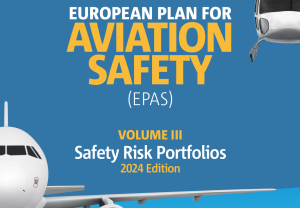By Philip Butterworth-Hayes
The European Aviation Safety Agency (EASA) “will develop guidelines on the design of urban air mobility (UAM) route (sic) in order to foster common principles on rules for VTOL route design, have a common approach to the concept of operations, share best practices for VTOL trajectories, and lay down principles on how to identify regional characteristics,” according to the Agency’s 2024 edition of its European Plan for Aviation – EPAS Actions, 2024 edition, published In January.
“The guidelines are planned for publication in 2024,” it continued. “In addition, based on the outcome of the discussions within the task force, the Agency may consider the deliverables and guidelines to improve the content of the already published AMC/GM (Acceptable Means of Compliance (AMC) and Guidance Material (GM)) as part of the regular update RMT “rule making tasks).
Although the U-space regulation came into force among EASA member states (MS) in January 2023, European countries have not yet created any U-space areas managed by nationally-certified U-space service providers (USSPs) to enable complex commercial drone operations in busy lower airspace areas. To accelerate this process, EASA also announced in the publication:
“The Agency together with Member States Focal points for the U-space Regulatory Framework implementation has established a task force with the aim of sharing and developing best practices for U-space service providers (USSPs) and single common information service providers (SCISPs) certification. In addition, this task force is developing best practises for the airspace risk assessment (ARA) process, supported by EUROCONTROL. The ARA needs to be conducted by the Member States before establishing and designating U-space airspace in their airspace. The task force works also on best practices and guidance material on how the interactions/interfaces between the main U-space stakeholders (USSPs/SCISPs/ATS providers) should take place.
“The main deliverables of the task force will be frequently asked questions, checklists, application forms, compliance matrices, and guidelines that will be made available on the Agency’s website upon finalisation of the work (expected in Q2 2024).”

However, in the accompanying Safety Risk Portfolios document (see below), which lays down the basis for understanding a hierarchy of aviation risks, drones and eVTOLs make only fleeting appearances.
Drones appear in the section on small aircraft….
“Damage tolerance to UAS collisions (SI-4019) (Amended) UAS are a growing airborne conflict threat to manned aircraft due to their growing popularity among the public who may not be aware of their obligations under the UAS regulations. It is important to consider the structural tolerance of a general aviation aircraft to withstand impact with UAS and their ability to maintain controllability to enable a safe landing after a collision with an UAS. The damage tolerance has a direct relationship with the weight and size of the UAS, but also with the design of the UAS. The vulnerability of aircraft differs depending on the category of aircraft: Large aeroplanes (CS-25), small rotorcraft (CS-27) large rotorcraft (CS-29) and Normal, Utility, Aerobatic and Commuter Aeroplanes (CS-23). The latest research results from EPAS Action, RES.0015 on the “Vulnerability of manned aircraft to drone strikes” will now be analysed.”
…and in the air traffic management section:
“The increasing popularity of drones, especially drones of less than 25 kg operating in the ‘open’ category, has inadvertently led to an increase of airborne collision risk between drones and manned aircraft. This is largely due to unauthorised activity of drones in both take-off and approach paths of commercial airlines up to 5 000 ft. While less common, unauthorised activity of drones may also pose a collision hazard when an aircraft is flying en route. Authorised UAS operations in the ‘specific’ category may include UAS flights at altitudes at which other (manned) aircraft will fly, and therefore these could possibly pose risks as well. For example, failure of the UAS guidance and control system or degradation of technical systems supporting e-identification, geo-fencing, detect and avoid, (self)-separation or collision avoidance, could increase the risk of airborne collision with a UAS. Also, HF issues and unintended remote pilot/operator errors could result in airspace violations, procedural deviations, and altitude deviations (thereby increasing the risk of airborne collision).”
While eVTOLs are not covered at all, on the basis “there is currently no existing e-VTOL certified and operated in Europe”. Sailplanes and balloons, on the other hand, are covered in detail.
For more information
EPAS Volume III – Safety Risk Portfolios 2024 Edition
European Plan for Aviation Safety (EPAS) 2024 – 13th edition | EASA (europa.eu)
(Image: Barcleona (Shutterstock)




